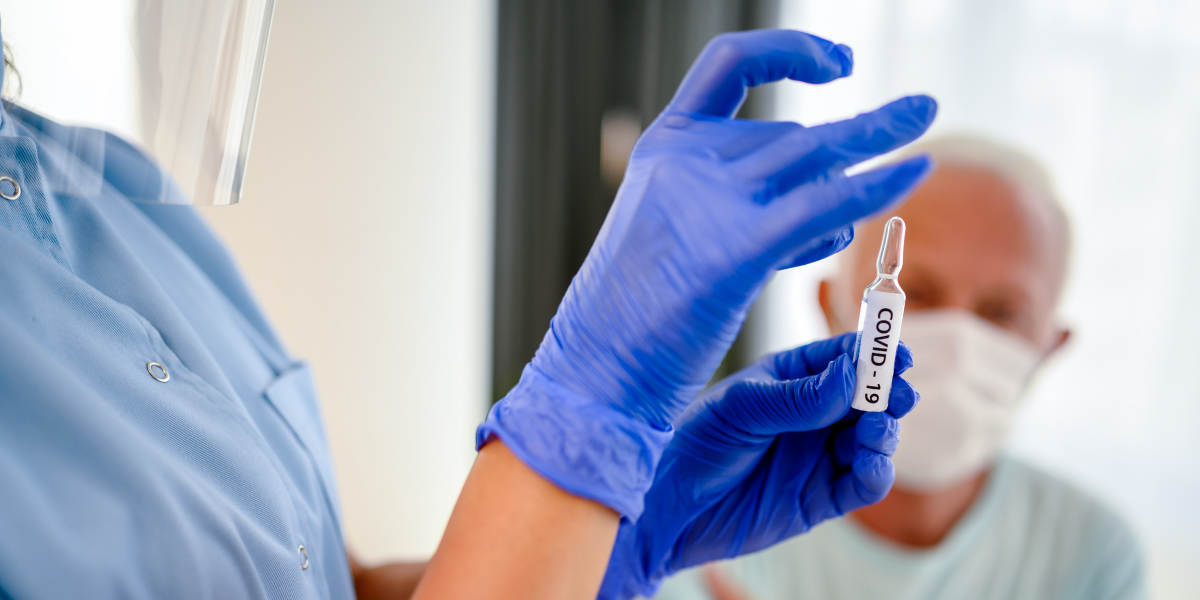
A View from the Frontlines: COVID-19 Vaccine Q+A With Customer Avamere
 4 min
4 min
While the COVID-19 vaccine rollout has not gone as smoothly or swiftly as many were hoping, the good news is that among residents of long-term care facilities, the statistics are more encouraging. Recent data from the CDC COVID-19 Response Team shows a median of 77.8% of residents and 37.5% of staff members per facility have received one or more doses of the COVID-19 vaccine to date.
So, what has made the vaccine rollout more successful at skilled nursing facilities (SNFs) and other long-term care facilities? What strategies were used to ensure residents felt comfortable enough to take the vaccine? And, what lessons can we learn from this scenario that can be applied elsewhere?
To dig into these questions and more, we recently spoke with Paula Love, Director of Clinical Informatics at Avamere, a group of healthcare organizations that provides assisted living, independent living, rehabilitation, transitional care, and more. In addition to her corporate role at the organization, Paula also recently returned to the frontlines as a nurse to support in a COVID-19 recovery unit. Read on for our conversation.
Q: Within nursing homes and other long-term care facilities, what kinds of programs or strategies have been effective in creating a positive and safe experience for residents?
Paula: Our Chief Medical Officer, Dr. Elizabeth Burns, anticipated a short window between the time the vaccine would receive emergency use authorization (EUA) and when shots would get into arms and the key to a successful campaign would be education. Dr. Burns created a framework for the organization to implement a successful educational campaign for staff, patients, and families with a repeated theme of early and frequent communication.
There were FAQs, video webinars on the COVID-19 vaccines, and news interviews with PSAs about the importance of this safe and highly effective vaccine. She engaged with all leadership members for training using slide presentations and fliers that would allow leadership and champions in all our facilities to have a collective voice in ensuring accurate and timely information was available for all.
Dr. Burns also hosted weekly Zoom Town Halls with continued education on the vaccine and vaccine hesitancy with an open forum for question and answers and direct access to her via email to further discuss any questions. She was very transparent, fielding questions from residents and staff members alike, and was also very honest and empathetic in her answers. These sessions are also available for staff and family/patients to review. Our Medical Directors in the facilities also hosted town halls for families and patients along with one-on-one conversations available as well.
Q: What kind or education or materials about the vaccine seem to resonate the most with residents? Is anything specifically focused on residents who are reluctant or have doubts about getting the vaccine?
Paula: We have not had much difficulty with residents wanting the vaccine and I believe our approach to education was a huge reason for that. Our leadership team was transparent and we had very few patients that declined the vaccine. In fact, 82% of our residents have been vaccinated as of January 26, 2021 and we expect to have more than 88% vaccinated by mid-February, with a goal of our whole facility, including staff, being vaccinated by February 28, 2021. The majority of our residents felt comfortable with the process due to the Zoom Town Halls, the materials, and the one-on-one conversations we were having to answer questions they may have had on their minds.
Q: How did Avamere approach preparations for the vaccine?
Paula: We worked with Walgreens to set up three clinic dates and track our vaccinations within PointClickCare. I was so happy to see that they had already updated their EHR platform to include a COVID-19 immunization tab because it was that little detail that saved our team so much time. In the event a resident is discharged in-between clinic dates where they were scheduled to get their second dose, we offer them the option to come back to get their second vaccination, or we hand out a token that they can present at Walgreens to get their final shot.
Q: What about strategies for healthcare workers who are potentially reluctant to get the vaccine? Is it different from the long-term care residents?
Paula: Our staff had the access to the education materials they needed about the vaccine, but they were still apprehensive. Many of our younger staff members were initially unsure and ended up delaying scheduling their vaccine. We are also advocating to be able to secure the Moderna vaccine after the Federal Pharmacy Program ends. Since the hospitals are able to secure their vaccine and keep it onsite, it increases the access for staff to receive once they have made this important decision.
By only having three separate opportunities to access the vaccine, it limits higher uptake among long-term care staff and we know in the future it will be imperative to have the vaccine onsite for our patients and staff. This is a condensed version of the interview, which originally appeared in PM360. Click here to read the full article.
March 1, 2021






